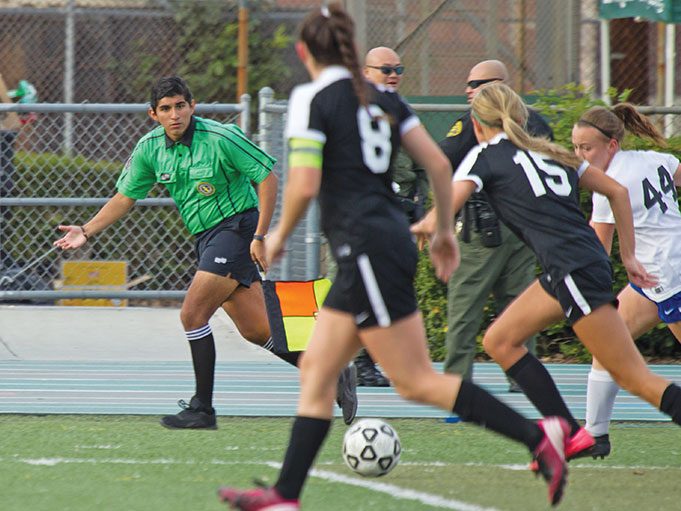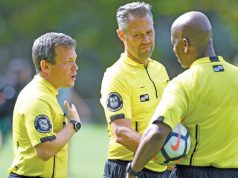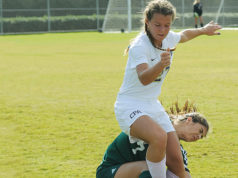Running comes with being a soccer referee. The need to keep up with play makes running essential, most notably since the referee’s angle of view can be critical in seeing infractions based on the direction of play and sometimes far from assistant referees. By running and opening up critical viewing angles, good referees show players they will catch such infractions and protect them from opponents who would commit them.
While running ability is vital, it must be combined with wisdom for the greatest degree of success. It is equally important for the referee to know when and where to run, and when energy should be conserved by walking or trotting. According to a U.S. Youth Soccer study by Jay H. Williams, Ph.D., the demands of an 80-minute high school match typically have a referee running between 5-6 miles. Yet, some referees cover this same distance and have better foul recognition than others who seem to be all over the field.
The key to running effectively is to be in the right place at the right time. Here are tips to help referees adjust their running pattern and better cover the game.
Work the diagonal pattern — but be flexible.
Yes, the diagonal pattern is an important tool in the diagonal officiating system. With that said, if you are 30 yards from play in your diagonal, even if the play is closer to the assistant, are you providing the right protection? Remember, soccer is a game of angles. You can improve your angles by closing the gap between you and play to between 10 and 15 yards. Through this closer proximity, referees are less likely to have interference with their view by having fewer players blocking their line of sight. Additionally, proximity often leads to greater facilitation in being positioned at the best angle as play continues. When positioned a long distance from play, the position adjustment may be a much more significant run versus mere steps, which could also cause a loss in focus while moving into position. However, while taking closer positions, referees must have greater anticipation in reading when play will transition to another part of the field, being ready to backpedal and running to create the angles for the next phase of play.
The disadvantage of the AR is primarily only being able run in a straight line. Sure, they can step closer or further from the line to get an angle. But, the AR does not have the same degree of freedom the referee does to change the angle. Make the extra trot to see the space between players, so you can better catch their nefarious actions should they occur.
Read the play — move to it.
If you are so committed to the diagonal pattern that you find yourself wearing a slot in the field, you are too committed. Move in the direction play is likely to go. A few early steps can prevent a full hustle to be on top of play. Soccer has ebbs and surges — within five to 10 minutes of officiating a game, you will be able to pick out the playmakers and the direction they are likely to go on their runs.
This “reading of play” is how top-level referees operate. Of course, top officials have advantages such as being able to watch both teams’ previous videos that the average high school or competitive level referee probably does not have. If the opportunity is there, notably for college-level officials or those working higher level games, take it. Look at who the playmakers are from each team, and what their runs look like. You can also identify the likely defensive strategies and use them to your advantage by anticipating play instead of reacting to it.
By using these approaches, you will be able to better read and respond to the play and be a better official by being in the right position. If you will excuse the pun, in the long run, this will improve your skills as an official, as well as help preserve your legs for that second, third or fourth game of the day!
What's Your Call? Leave a Comment:
Note: This article is archival in nature. Rules, interpretations, mechanics, philosophies and other information may or may not be correct for the current year.
This article is the copyright of ©Referee Enterprises, Inc., and may not be republished in whole or in part online, in print or in any capacity without expressed written permission from Referee. The article is made available for educational use by individuals.

















